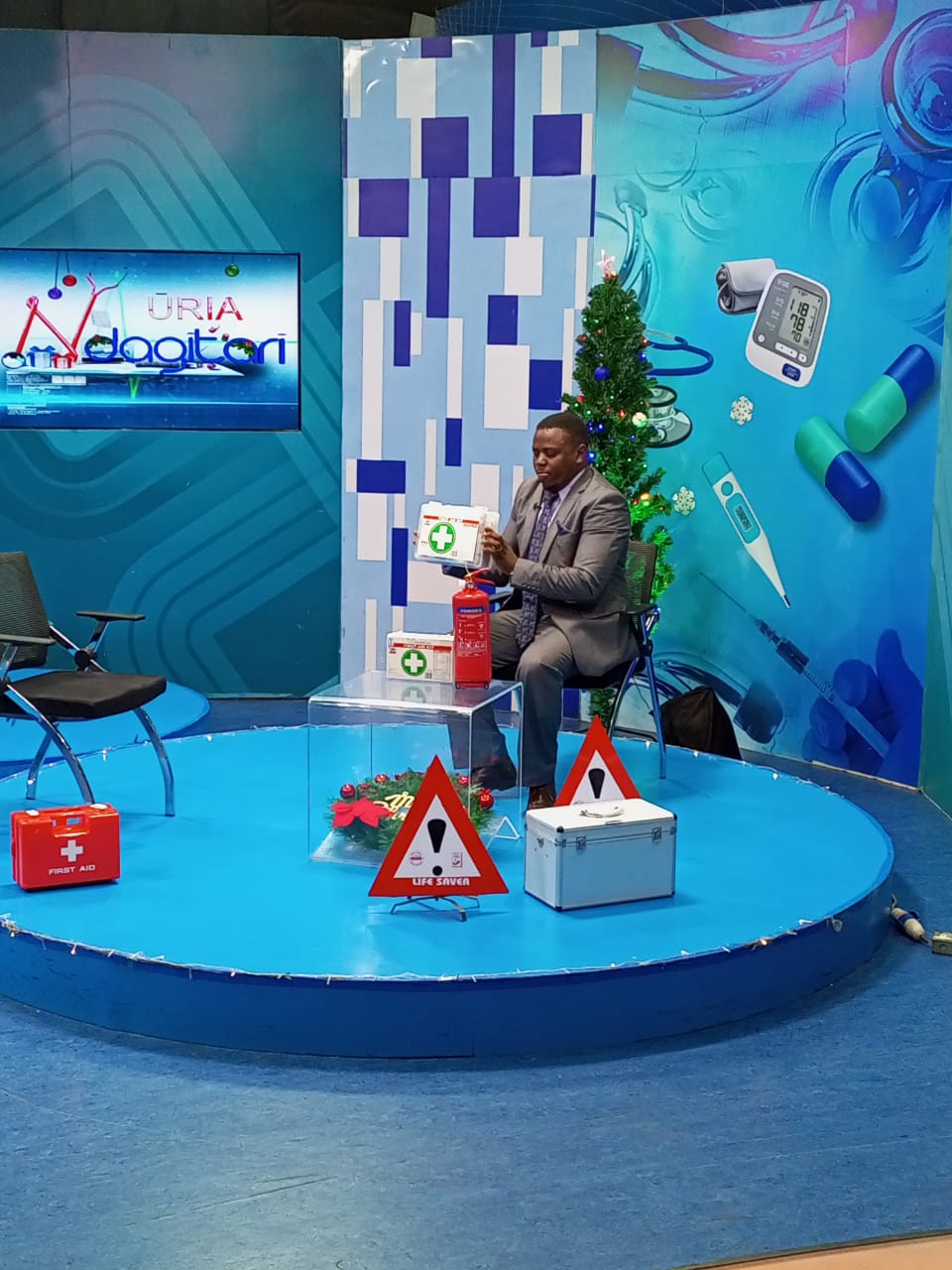Health and safety management is a systematic approach to ensuring the well-being of employees and others affected by workplace activities. It involves identifying, evaluating, and controlling workplace hazards to prevent accidents, injuries, and health issues. Here’s a detailed overview of health and safety management, including its components, principles, and best practices:
**1. Health and Safety Management System (HSMS)
Purpose: To create a structured framework for managing health and safety in the workplace.
Components:
• Policy: Defines the organization’s commitment to health and safety, including objectives and responsibilities.
• Planning: Involves risk assessments, setting objectives, and planning actions to address identified risks.
• Implementation: Includes training, communication, and resource allocation to execute health and safety plans.
• Evaluation: Regularly assesses the effectiveness of health and safety measures through audits and reviews.
• Review: Ensures continuous improvement by updating policies and procedures based on evaluation results.
Explanation: An HSMS provides a comprehensive approach to managing health and safety, ensuring that all aspects are systematically addressed and integrated into organizational practices.
**2. Risk Assessment and Management
Purpose: To identify and mitigate risks that could harm employees or the environment.
Steps:
• Hazard Identification:
o Methods: Inspections, job safety analysis, and employee input.
o Examples: Identifying machinery, chemicals, and work processes that pose risks.
• Risk Evaluation:
o Methods: Assessing the likelihood and severity of identified hazards.
o Examples: Determining potential outcomes of chemical spills or machinery malfunctions.
• Control Measures:
o Types: Engineering controls, administrative controls, personal protective equipment (PPE).
o Examples: Installing safety guards on machines, implementing training programs.
Explanation: Effective risk assessment and management are crucial for preventing accidents and ensuring a safe work environment by proactively addressing potential hazards.
**3. Compliance with Regulations and Standards
Purpose: To ensure adherence to legal and regulatory requirements.
Components:
• Legislation:
o Examples: Occupational Safety and Health Administration (OSHA) regulations, local health and safety laws.
o Explanation: Compliance with these regulations is mandatory and involves understanding and applying legal requirements.
• Standards:
o Examples: ISO 45001 (Occupational Health and Safety Management), ANSI standards.
o Explanation: Standards provide guidelines and best practices for managing health and safety and may be used for certification and benchmarking.
Explanation: Compliance ensures that the organization meets legal obligations and follows recognized best practices, contributing to overall safety and legal protection.
**4. Health and Safety Policies and Procedures
Purpose: To establish clear guidelines and protocols for managing health and safety.
Components:
• Health and Safety Policy:
o Content: Organizational commitment, objectives, responsibilities.
o Explanation: A policy document outlines the organization’s approach to health and safety and sets the framework for action.
• Procedures:
o Examples: Emergency response plans, incident reporting procedures, first aid protocols.
o Explanation: Detailed procedures provide step-by-step instructions for handling specific situations and maintaining safety.
Explanation: Policies and procedures ensure consistency and clarity in health and safety practices, providing a structured approach to managing workplace safety.
**5. Training and Awareness
Purpose: To educate employees about health and safety practices and their roles in maintaining a safe work environment.
Components:
• Training Programs:
o Examples: Safety induction, hazard recognition, emergency response training.
o Explanation: Training programs equip employees with the knowledge and skills needed to perform their duties safely.
• Ongoing Awareness:
o Examples: Safety meetings, newsletters, safety drills.
o Explanation: Continuous awareness efforts reinforce safety messages and keep health and safety top-of-mind.
Explanation: Training and awareness programs are essential for ensuring that employees understand safety procedures and can respond effectively to emergencies.
**6. Incident Reporting and Investigation
Purpose: To document and analyze accidents, near-misses, and unsafe conditions to prevent recurrence.
Components:
• Reporting:
o Examples: Incident report forms, online reporting systems.
o Explanation: Provides a mechanism for employees to report incidents and hazards.
• Investigation:
o Steps: Incident analysis, identifying root causes, implementing corrective actions.
o Explanation: Investigations help understand the causes of incidents and develop measures to prevent similar occurrences.
Explanation: Effective incident reporting and investigation help identify issues, improve safety measures, and prevent future accidents.
**7. Emergency Preparedness and Response
Purpose: To ensure that the organization is prepared to handle emergencies effectively.
Components:
• Emergency Plans:
o Examples: Fire evacuation plans, chemical spill response plans.
o Explanation: Detailed plans outline the actions to be taken during various emergencies.
• Drills and Exercises:
o Examples: Fire drills, evacuation drills.
o Explanation: Regular practice helps ensure that employees are familiar with emergency procedures and can respond appropriately.
Explanation: Emergency preparedness ensures that the organization can handle crises effectively, minimizing harm and disruption.
**8. Health and Safety Culture
Purpose: To foster a positive attitude towards health and safety throughout the organization.
Components:
• Leadership Commitment:
o Examples: Management involvement in safety initiatives, visible support for health and safety.
o Explanation: Leadership commitment is crucial for setting the tone and priorities for health and safety.
• Employee Engagement:
o Examples: Safety committees, employee feedback systems.
o Explanation: Involving employees in safety efforts promotes a collaborative approach and enhances safety culture.
Explanation: A strong health and safety culture encourages proactive behavior, improves compliance, and reduces risk.
**9. Monitoring and Review
Purpose: To evaluate the effectiveness of health and safety measures and identify areas for improvement.
Components:
• Performance Monitoring:
o Examples: Safety audits, inspections, incident data analysis.
o Explanation: Regular monitoring helps track safety performance and identify trends.
• Review and Improvement:
o Examples: Management reviews, policy updates.
o Explanation: Periodic reviews and updates ensure that health and safety practices remain effective and relevant.
Explanation: Monitoring and review processes are essential for maintaining and improving health and safety management systems.
Effective health and safety management is vital for protecting employees, complying with legal requirements, and ensuring a safe and productive work environment. By implementing a structured management system, conducting thorough risk assessments, adhering to regulations, providing training, and fostering a positive safety culture, organizations can significantly reduce risks and enhance overall safety. Regular monitoring and continuous improvement ensure that health and safety practices evolve and remain effective in addressing emerging challenges and changing conditions.
Health And Safety Committee
A Health and Safety Committee (HSC) plays a crucial role in promoting and maintaining a safe and healthy work environment. It involves a group of employees and management representatives working together to address health and safety issues within the workplace. Here’s a detailed and comprehensive overview of a Health and Safety Committee, including its structure, functions, and best practices:
**1. Purpose and Objectives
Purpose: The primary aim of a Health and Safety Committee is to facilitate communication between employees and management regarding health and safety concerns and to promote a safe work environment.
Objectives:
• Identify Hazards: Recognize and assess workplace hazards and risks.
• Develop Policies: Create and recommend health and safety policies and procedures.
• Promote Compliance: Ensure adherence to health and safety regulations and standards.
• Enhance Awareness: Foster a culture of safety through training and awareness programs.
• Improve Safety Performance: Monitor and review safety performance to continuously improve practices.
Explanation: The committee’s purpose and objectives guide its activities and focus areas, ensuring that it effectively contributes to workplace safety.
**2. Committee Structure
Composition:
• Management Representatives:
o Role: Provide leadership and resources, make decisions on policy implementation.
o Explanation: Management representatives ensure that safety recommendations align with organizational goals and have the necessary support for implementation.
• Employee Representatives:
o Role: Represent the interests of the workforce, provide insights into workplace hazards and concerns.
o Explanation: Employee representatives bring valuable perspectives on day-to-day safety issues and help ensure that all employees’ voices are heard.
• Health and Safety Officer (if applicable):
o Role: Provide expertise on health and safety regulations, conduct training, and assist with risk assessments.
o Explanation: The Health and Safety Officer acts as a subject matter expert and supports the committee with technical knowledge.
Size and Frequency of Meetings:
• Size: The committee should be appropriately sized to ensure effective discussion and decision-making (typically 4-10 members).
• Frequency: Regular meetings (e.g., monthly or quarterly) are necessary to address ongoing issues and review safety performance.
Explanation: A well-structured committee with a balanced representation from management and employees ensures that various perspectives are considered and that safety issues are addressed effectively.
**3. Roles and Responsibilities
Chairperson:
• Role: Lead meetings, set agendas, and ensure productive discussions.
• Responsibilities: Facilitate meetings, coordinate activities, and act as the primary contact for health and safety matters.
Secretary:
• Role: Document meeting minutes, track action items, and manage communication.
• Responsibilities: Record minutes, distribute agendas and reports, and ensure that follow-up actions are completed.
Committee Members:
• Role: Contribute to discussions, provide feedback, and assist with implementing safety measures.
• Responsibilities: Participate actively in meetings, report safety concerns, and help develop and promote safety policies.
Explanation: Clearly defined roles and responsibilities ensure that committee members understand their functions and contribute effectively to the committee’s objectives.
**4. Key Functions and Activities
Hazard Identification and Risk Assessment:
• Activities: Conduct regular inspections, review incident reports, and assess potential hazards.
• Purpose: Identify and evaluate workplace hazards to prioritize safety interventions.
Policy Development and Review:
• Activities: Develop and review health and safety policies and procedures.
• Purpose: Ensure that policies are up-to-date and reflect current safety practices and regulations.
Training and Awareness:
• Activities: Organize training sessions, awareness campaigns, and safety drills.
• Purpose: Enhance employees’ knowledge and skills related to health and safety.
Incident Investigation:
• Activities: Investigate workplace accidents and near-misses, analyze root causes, and recommend corrective actions.
• Purpose: Identify underlying issues and prevent recurrence of incidents.
Communication and Consultation:
• Activities: Facilitate communication between employees and management, address safety concerns, and provide feedback.
• Purpose: Promote open dialogue and ensure that safety issues are promptly addressed.
Monitoring and Evaluation:
• Activities: Track safety performance metrics, review accident statistics, and assess the effectiveness of safety measures.
• Purpose: Monitor progress and make improvements based on performance data.
Explanation: These functions ensure that the committee addresses various aspects of health and safety management and contributes to continuous improvement in workplace safety.
**5. Best Practices for Effective Health and Safety Committees
Regular and Structured Meetings:
• Practice: Hold meetings at scheduled intervals with a clear agenda and defined objectives.
• Benefit: Ensures that all relevant topics are covered and that the committee operates efficiently.
Active Participation and Engagement:
• Practice: Encourage active participation from all members and address their concerns and suggestions.
• Benefit: Promotes a collaborative approach and ensures that diverse perspectives are considered.
Clear Documentation and Follow-Up:
• Practice: Document meeting minutes, action items, and decisions, and follow up on implementation.
• Benefit: Provides a record of discussions and ensures that agreed-upon actions are completed.
Training and Development:
• Practice: Provide ongoing training for committee members on health and safety topics and committee processes.
• Benefit: Enhances members’ knowledge and effectiveness in their roles.
Effective Communication:
• Practice: Maintain clear and open communication channels with employees and management.
• Benefit: Ensures that safety information is disseminated effectively and that feedback is received.
Continuous Improvement:
• Practice: Regularly review and update safety policies and procedures based on feedback and performance data.
• Benefit: Ensures that safety practices remain relevant and effective.
Explanation: Adopting these best practices helps ensure that the Health and Safety Committee operates effectively, contributes to a positive safety culture, and achieves its objectives.
**6. Legal and Regulatory Considerations
Compliance with Regulations:
• Examples: Occupational Safety and Health Administration (OSHA) requirements, local safety laws.
• Explanation: Ensure that the committee operates in accordance with legal and regulatory requirements related to health and safety.
Documentation and Record-Keeping:
• Examples: Maintain records of meetings, incident reports, and safety policies.
• Explanation: Provides evidence of compliance and supports continuous improvement efforts.
Explanation: Adhering to legal and regulatory requirements ensures that the committee fulfills its obligations and operates within established guidelines.
A Health and Safety Committee is essential for promoting and maintaining workplace safety. By providing a structured approach to managing health and safety issues, fostering communication between employees and management, and implementing effective safety measures, the committee helps create a safer and healthier work environment. Regular meetings, active participation, clear documentation, and adherence to best practices and legal requirements are crucial for the committee’s success. Through its dedicated efforts, the committee plays a pivotal role in enhancing workplace safety and ensuring that health and safety concerns are effectively addressed.
READ MORE
Safety Culture Video
Largest Safety Company
World Safety Day
Behavioral Occupational Health and Safety



















